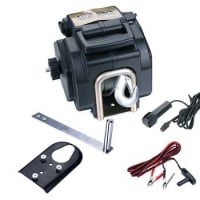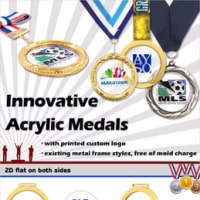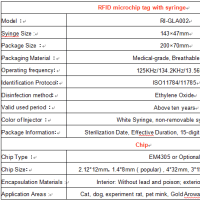With the rapidly growing number of vehicles around the world, the disposal of end-of-life tyres is a growing issue. Often simply dumped by the million to pose a serious environmental, health and fire risk, the technology to recover higher value materials and energy from waste tyres is moving forward.
Figures published by the U.S. Rubber Manufacturers Association estimate that the U.S. - the world's largest producer of ELTs - generated 291.8 million tyres in 2009. With an average weight of 33.4 pounds (15.1 kg) that equates to some 4.4 million tonnes. According to statistics published by the European Tyre & Rubber Manufacturers' Association (ETRMA), in 2010 Europe produced around 2.7 million tonnes of ELTs.
With so many ELTs being produced, as well as the huge stockpiles from the past, waste tyres pose many potential dangers. They can contaminate groundwater, harbour disease carrying mosquitoes in pooled water and they are not only flammable, but once ablaze, extremely difficult to extinguish.
Often the result of arson, fires at tyre dumps are not uncommon. In 1990 Hagersville, Ontario was the scene of one of the worst tyre fires in history. As a mechanised army of fire fighters struggled to gain control of the situation, for 17 days 14 million tyres packed onto the 11 acre site spewed toxic clouds of thick black smoke into the air.
According to the New York Times, in addition to the toxic fumes, around 158,000 gallons (600,000 litres) of oil was released by the melting rubber was collected from the site. Chemical pollutants, suspected to have been caused by the operation to extinguish the fire were also found in the aftermath of the blaze.
In a separate incident an underground dumpsite in Wales, thought to contain around 9 million tyres, burned for an astonishing 15 years following its ignition in 1989.
Regulations
Because of the hazards associated with scrap tyres, nearly all developed countries regulate their disposal. In the EU, while no single directive or regulation targets ELTs, the Landfill Directive banned them from being disposed of to landfill whole in 2003 and in 2006 banned even their shredded remains from landfill.
In the U.S. 38 states ban whole tyres from landfills, 35 states allow shredded tyres to be landfilled, 11 states ban all tyres from landfill, 17 states allow processed tyres to be placed into monofills (a landfill designated for a the disposal of a single material) and eight states have no restrictions on placing scrap tyres in landfills. According to the U.S. Environmental Protection Agency (EPA), 48 states currently have laws or regulations which specifically deal with scrap tyres.
In the UK, to promote more robust standards in the collection and disposal of end-of-life tyres, and to help eradicate rogue operators, in 1999 the Tyre Industry Federation launched a voluntary initiative, the Responsible Recycler Scheme (RSS). Under the scheme tyres are stored, collected, recycled or reprocessed in line with all UK and UE legislations. Independent audits and full traceability mean that tyres handled by RRS member companies can be tracked throughout the disposal chain. Retailers usually pass the associated costs of the scheme onto the customers, with a disposal surcharge attached to the purchase of a new tyre.
In 2004 the Tyre Recovery Association (TRA) was formed to support the RRS. All TRA members are fully accredited, which guarantees that all tyres collected, recycled or reprocessed by them are disposed of or reused appropriately.
The programme has gone on to become the largest of its kind in Europe and currently handles some 45 million used tyres every year. Other countries including Germany, Switzerland, Austria and New Zealand operate similar voluntary systems, as well as many U.S. states.
Composition and Uses
According to the World Business Council for Sustainable Development's Tire Industry Project, which has published a framework for the effective management of ELTs, a typical tyre contains 30 types of synthetic rubber, eight types of natural rubber, eight types of carbon black, steel cord, polyester, nylon, steel bead wire, silica and 40 different kinds of chemicals, waxes, oils and pigments - quite a cocktail.
Containing such a plethora of materials, tyres present a wide range of opportunities. However, in addition to the potential for material recovery, the very high calorific content of ELTs has led to their widespread use as Tyre Derived Fuel (TDF) in cement kilns and energy recovery facilities.
In the U.S. some 4.39 million tons (4 million tonnes) of the 5.17 million tons (4.7 million tonnes) of the waste tyres generated in 2009 were recovered. Of the recovered ELTs, just over 2 million tons (1.8 million tonnes) were sent for energy recovery and around 1.6 million tons (1.45 million tonnes) were recovered as ground rubber for use by a wide range of industries. Interestingly, the report shows that the recovery of materials grew significantly from the 2007 figures, while use as TDF was down by almost half a million tonns per year.
Using traditional recycling techniques, granulated rubber recovered from waste tyres can be used variously as an aggregate, in tiles, adhesives, asphalt, sports surfaces, and extruded rubber products, to name but a few of its uses. And in terms of energy recovery the natural rubber fraction of the tyre can be considered as a renewable energy source.The waste tyre pyrolysis machine is a good way to tackling tyre waste.
Conclusions
The greatest environmental and economic benefits from the treatment of ELTs lie furthest up the waste hierarchy.
Given the expanding global vehicle base, and the consumable nature of tyres, prevention is probably unattainable. Indeed, for the foreseeable future the number of waste tyres being generated globally will continue to grow. And for passenger car tyres, reuse options, such as retreading, are limited.
While the use of tyres as TDF is certainly better than landfilling or stockpiling, there are many interesting projects on the horizon which offer the potential of recovering not only energy or low value materials, but a wide range of high value materials and energy.The waste tyre pyrolysis machine is a good way to tackling tyre waste.
Figures published by the U.S. Rubber Manufacturers Association estimate that the U.S. - the world's largest producer of ELTs - generated 291.8 million tyres in 2009. With an average weight of 33.4 pounds (15.1 kg) that equates to some 4.4 million tonnes. According to statistics published by the European Tyre & Rubber Manufacturers' Association (ETRMA), in 2010 Europe produced around 2.7 million tonnes of ELTs.
With so many ELTs being produced, as well as the huge stockpiles from the past, waste tyres pose many potential dangers. They can contaminate groundwater, harbour disease carrying mosquitoes in pooled water and they are not only flammable, but once ablaze, extremely difficult to extinguish.
Often the result of arson, fires at tyre dumps are not uncommon. In 1990 Hagersville, Ontario was the scene of one of the worst tyre fires in history. As a mechanised army of fire fighters struggled to gain control of the situation, for 17 days 14 million tyres packed onto the 11 acre site spewed toxic clouds of thick black smoke into the air.
According to the New York Times, in addition to the toxic fumes, around 158,000 gallons (600,000 litres) of oil was released by the melting rubber was collected from the site. Chemical pollutants, suspected to have been caused by the operation to extinguish the fire were also found in the aftermath of the blaze.
In a separate incident an underground dumpsite in Wales, thought to contain around 9 million tyres, burned for an astonishing 15 years following its ignition in 1989.
Regulations
Because of the hazards associated with scrap tyres, nearly all developed countries regulate their disposal. In the EU, while no single directive or regulation targets ELTs, the Landfill Directive banned them from being disposed of to landfill whole in 2003 and in 2006 banned even their shredded remains from landfill.
In the U.S. 38 states ban whole tyres from landfills, 35 states allow shredded tyres to be landfilled, 11 states ban all tyres from landfill, 17 states allow processed tyres to be placed into monofills (a landfill designated for a the disposal of a single material) and eight states have no restrictions on placing scrap tyres in landfills. According to the U.S. Environmental Protection Agency (EPA), 48 states currently have laws or regulations which specifically deal with scrap tyres.
In the UK, to promote more robust standards in the collection and disposal of end-of-life tyres, and to help eradicate rogue operators, in 1999 the Tyre Industry Federation launched a voluntary initiative, the Responsible Recycler Scheme (RSS). Under the scheme tyres are stored, collected, recycled or reprocessed in line with all UK and UE legislations. Independent audits and full traceability mean that tyres handled by RRS member companies can be tracked throughout the disposal chain. Retailers usually pass the associated costs of the scheme onto the customers, with a disposal surcharge attached to the purchase of a new tyre.
In 2004 the Tyre Recovery Association (TRA) was formed to support the RRS. All TRA members are fully accredited, which guarantees that all tyres collected, recycled or reprocessed by them are disposed of or reused appropriately.
The programme has gone on to become the largest of its kind in Europe and currently handles some 45 million used tyres every year. Other countries including Germany, Switzerland, Austria and New Zealand operate similar voluntary systems, as well as many U.S. states.
Composition and Uses
According to the World Business Council for Sustainable Development's Tire Industry Project, which has published a framework for the effective management of ELTs, a typical tyre contains 30 types of synthetic rubber, eight types of natural rubber, eight types of carbon black, steel cord, polyester, nylon, steel bead wire, silica and 40 different kinds of chemicals, waxes, oils and pigments - quite a cocktail.
Containing such a plethora of materials, tyres present a wide range of opportunities. However, in addition to the potential for material recovery, the very high calorific content of ELTs has led to their widespread use as Tyre Derived Fuel (TDF) in cement kilns and energy recovery facilities.
In the U.S. some 4.39 million tons (4 million tonnes) of the 5.17 million tons (4.7 million tonnes) of the waste tyres generated in 2009 were recovered. Of the recovered ELTs, just over 2 million tons (1.8 million tonnes) were sent for energy recovery and around 1.6 million tons (1.45 million tonnes) were recovered as ground rubber for use by a wide range of industries. Interestingly, the report shows that the recovery of materials grew significantly from the 2007 figures, while use as TDF was down by almost half a million tonns per year.
Using traditional recycling techniques, granulated rubber recovered from waste tyres can be used variously as an aggregate, in tiles, adhesives, asphalt, sports surfaces, and extruded rubber products, to name but a few of its uses. And in terms of energy recovery the natural rubber fraction of the tyre can be considered as a renewable energy source.The waste tyre pyrolysis machine is a good way to tackling tyre waste.
Conclusions
The greatest environmental and economic benefits from the treatment of ELTs lie furthest up the waste hierarchy.
Given the expanding global vehicle base, and the consumable nature of tyres, prevention is probably unattainable. Indeed, for the foreseeable future the number of waste tyres being generated globally will continue to grow. And for passenger car tyres, reuse options, such as retreading, are limited.
While the use of tyres as TDF is certainly better than landfilling or stockpiling, there are many interesting projects on the horizon which offer the potential of recovering not only energy or low value materials, but a wide range of high value materials and energy.The waste tyre pyrolysis machine is a good way to tackling tyre waste.



















※コメント投稿者のブログIDはブログ作成者のみに通知されます